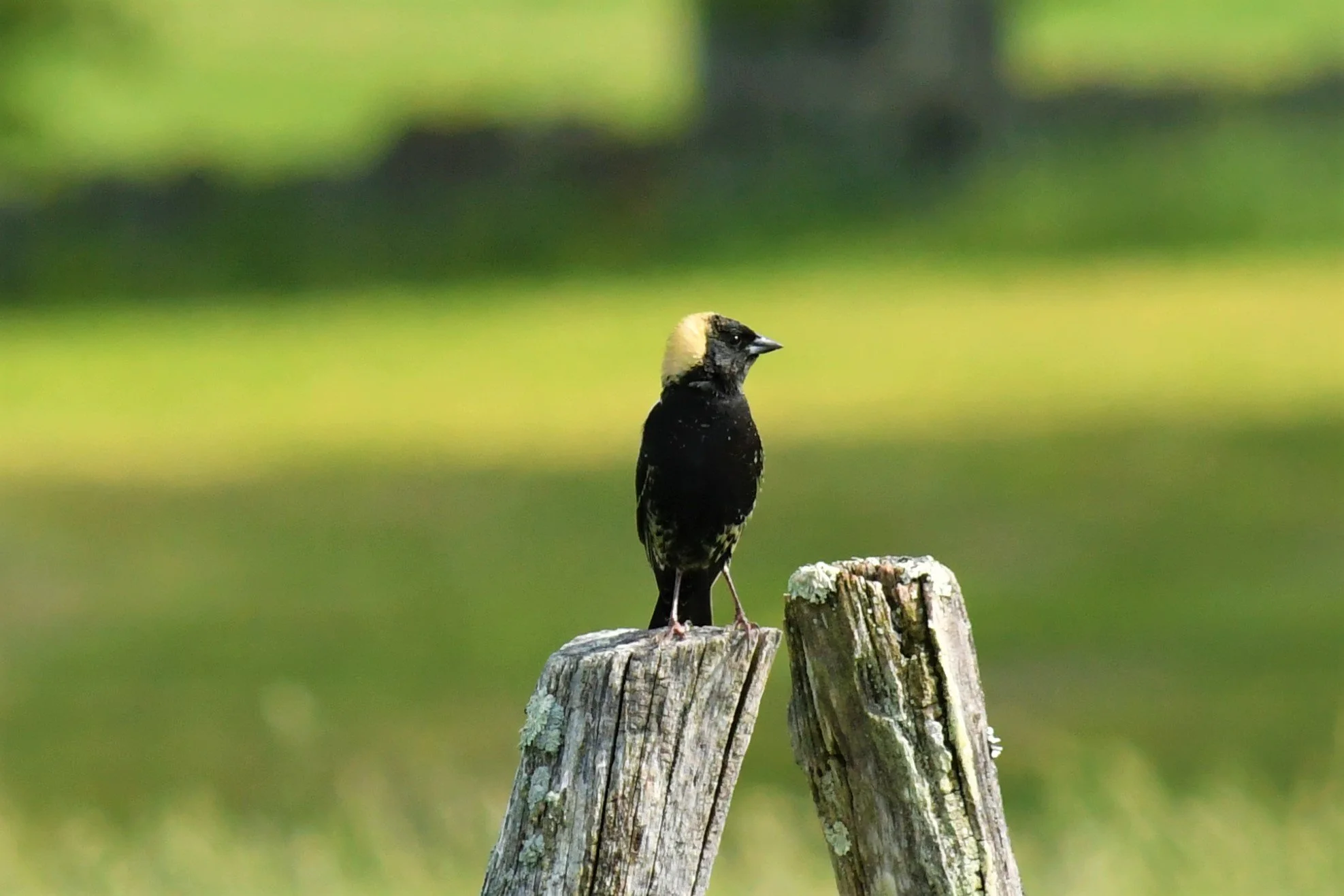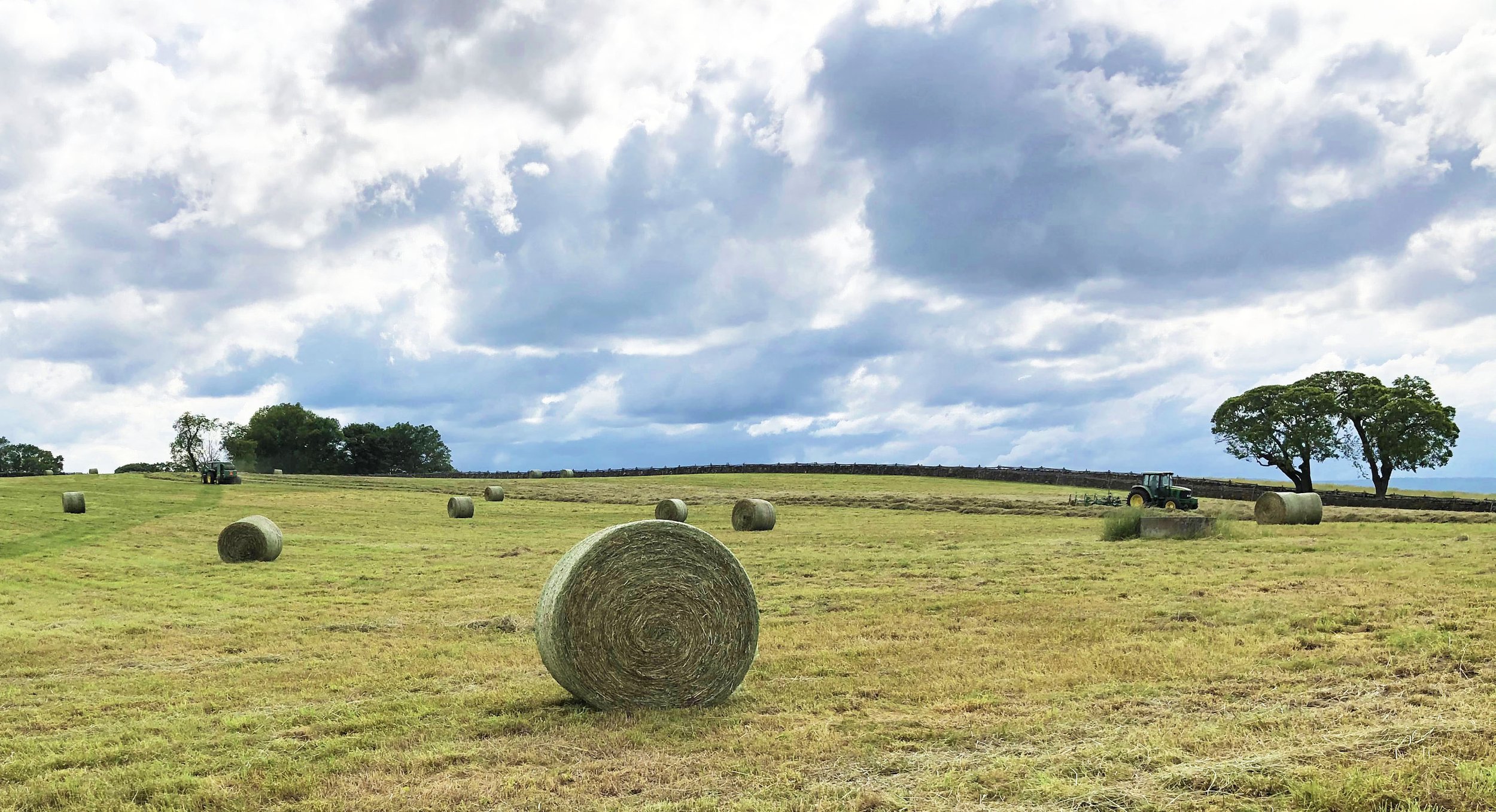Five Ways to Support Migratory Birds
Emily Ellis
We always look forward to the return of our purple martins every spring!
Migratory birds are among our most vulnerable native wildlife. Several of Oak Spring’s beloved resident bird species - including the purple martin, the bobolink, and the American goldfinch - make incredible journeys every spring and fall, traveling thousands of miles to wintering grounds and back again.
Such migrations can be perilous, and factors like light pollution, disease, and habitat loss contribute to the decline of already at-risk populations. Of the 1,093 species of birds protected under the Migratory Bird Treaty Act, 89 species are classified as threatened or endangered, and nearly 400 more are considered species of concern.
Fortunately, there are many different ways for humans to make sure that migratory birds have a safe trip and a successful nesting season. In honor of World Migratory Bird Day, here are five things that bird-lovers can do to support migratory birds in their area.
Turn off the Lights
Photo by Peter Crane
The theme for World Migratory Bird Day this year is “dim the lights,” and for good reason. Billions of birds die every year from colliding with windows or buildings. Most bird migrate at night, relying on the moon and stars for navigation, and the bright lights of cities can easily disorient them and cause them to crash into structures. Shutting off non-essential lights after 11pm can help prevent fatal crashes, as well as help you save on your electric bill. (You can learn more about what migratory birds you can expect to see in your area, and when, here.)
Another migratory-bird friendly household change you can make is altering your windows. Birds usually fly into windows because they see the reflection of the sky and think they have a clear flight path, so decorative decals, screens, or even temporary designs painted with soap can be good things to apply to the outside of windows and glass doors during migration season.
Plant Native Plants
Photo by Josh Rector
Native plants and wildlife have evolved together, and are essential to each other’s survival. This is especially true when it comes to many of the migratory grassland bird species we see in the Virginia piedmont, which are primarily insecitivorous. Native plant grasses and forbs support the diverse array of insects their diet requires, as well as create the habitat the ground-nesting birds need to raise their young.
If you have acreage, you may want to consider converting part of it into a native meadow, which are beautiful, support a range of native wildlife, and are low-maintenance once established. Over the past several years, the Oak Spring Garden Foundation has been working with several local environmental organizations - including the Clifton Institute and Virginia Working Landscapes - to convert former livestock pasture into native meadow.
Broomsedge, little blue stem, and indiangrass are three native grasses which have had success in Oak Spring’s native meadows, while colorful forbs like purple coneflower, blazing star, and black-eyed Susans are both beautiful and bird and pollinator favorites. Plant Virginia Natives has a great guide for cool and warm-season grasses that are suitable for lawns and larger spaces.
Keep an Eye on Your Cat
Everyone’s safer inside the house!
Even the fluffiest, sweetest cat has the potential to be a killing machine when it comes to small wildlife - which is why your kitties are better off kept either indoors or under close observation when out of the house.
Outdoor cats can kill approximately 2.4 billion birds every year in the United States. Ground-nesting birds like the bobolink, the eastern meadowlark, and other declining grassland species are especially vulnerable to cat attacks. While cats can’t control their natural predatory instincts, responsible owners can control their pets: keep your furry friends indoors, and make sure they are neutered and can’t contribute to rising feral cat populations. Both your cat and the local birds will be safer - a win-win!
Change the Way You Hay
Haying is important for agriculture and invasive species control, and doing so in a way that works around birds’ migration and nesting schedules can really help your local bird population. At the Oak Spring Garden Foundation, we follow the great bird-friendly land management recommendations laid out by Virginia Working Landscapes, one of which is to work around the schedules of migratory birds that nest close to the ground. For example, late-season nesters like the American goldfinch will have fledged by September 15, so we wait until after that date to hay the two large front fields on the Rokeby side of the property.
Other useful tips from VA Working Landscapes include incorporating native grasses into fields to increase foraging opportunities for wildlife, and modifying speed and cutting patterns in order to give small animals a chance to get out of the way.
Support Bird Research
Researchers from the Clifton Institute and VWL banding American Kestrels on the OSGF property. Photo courtesy of Josh Rector.
Making donations, volunteering, and contributing data through citizen science programs like eBird can help bird research in your area. Virginia Working Landscapes, the Clifton Institute, the Virginia Department of Wildlife Resources, and the Audubon Society of Northern Virginia work hard to monitor our declining and endangered bird populations and educate the public, and are great local organizations to support.
Keeping up with these organizations through social media and newsletter lists is also a great day to learn about bird conservation. projects in your area, current bird-friendly legislation that needs support, and bird-centric events and workshops.
Banner image by Michael Carr
Interested in learning more about the birds we have at Oak Spring? Check out the seasonal virtual bird walks on our Facebook page!






